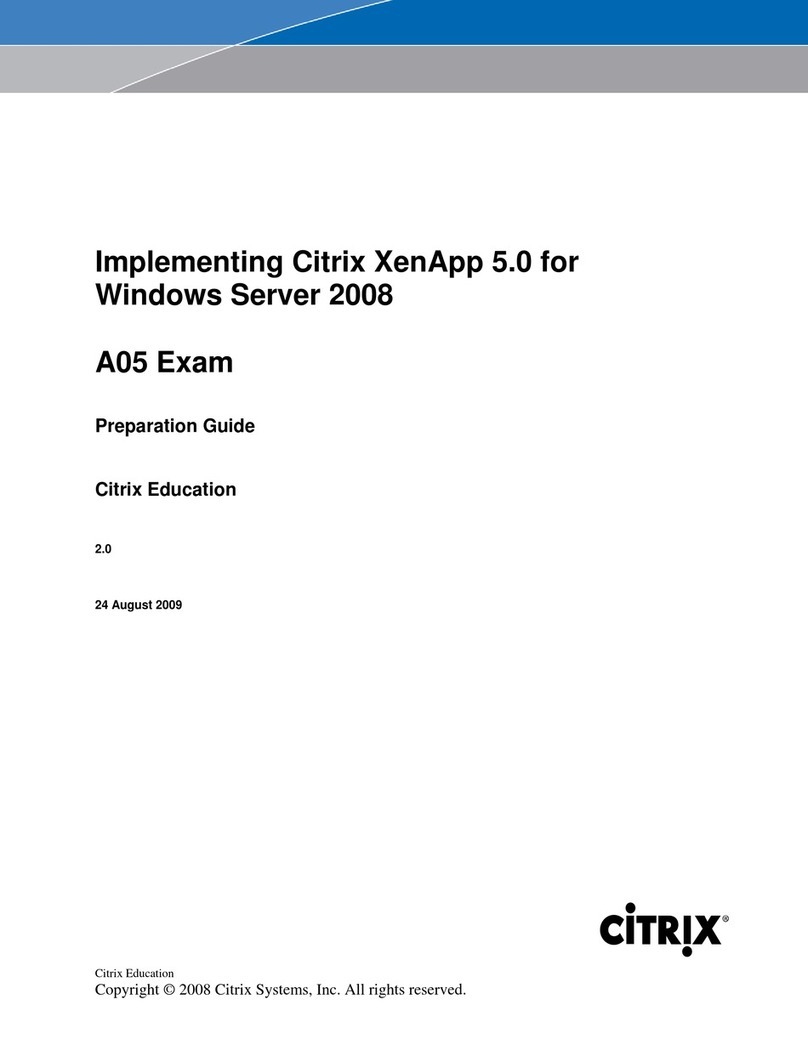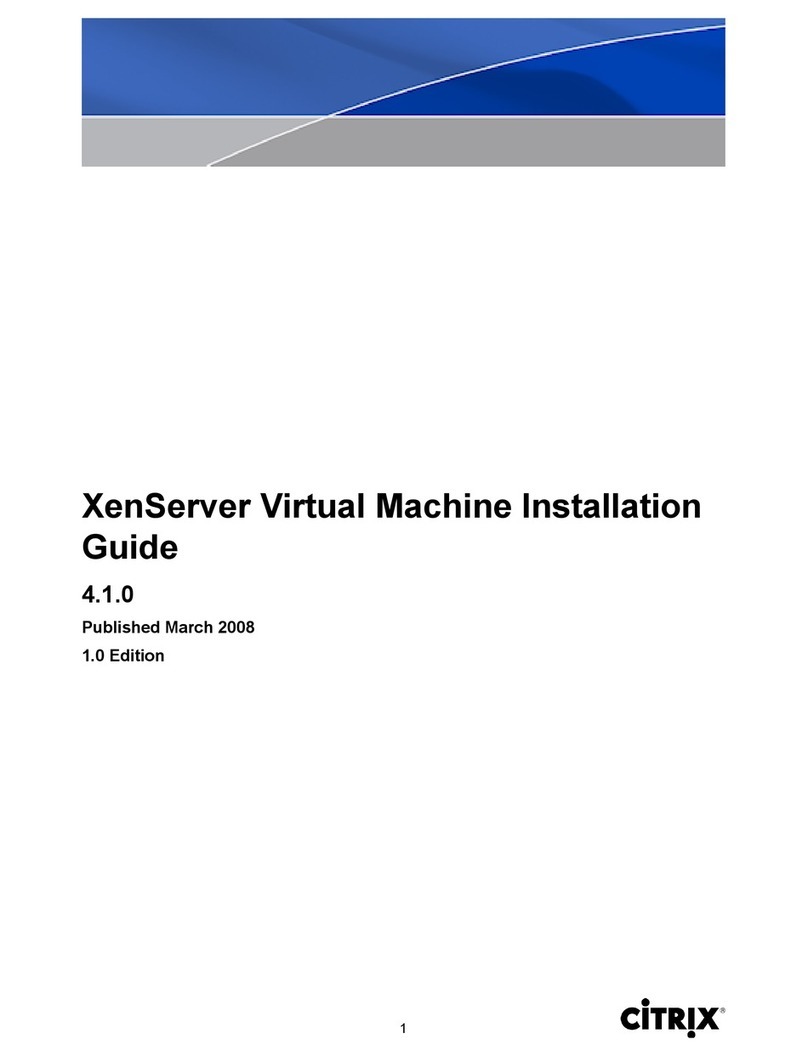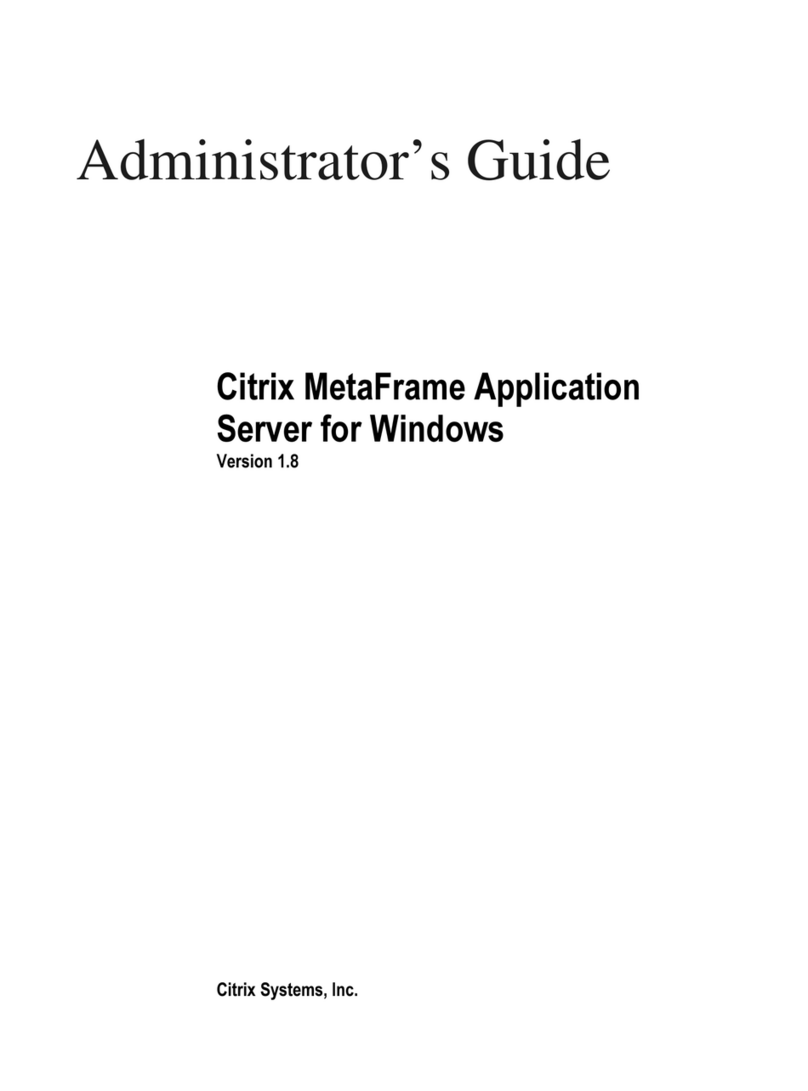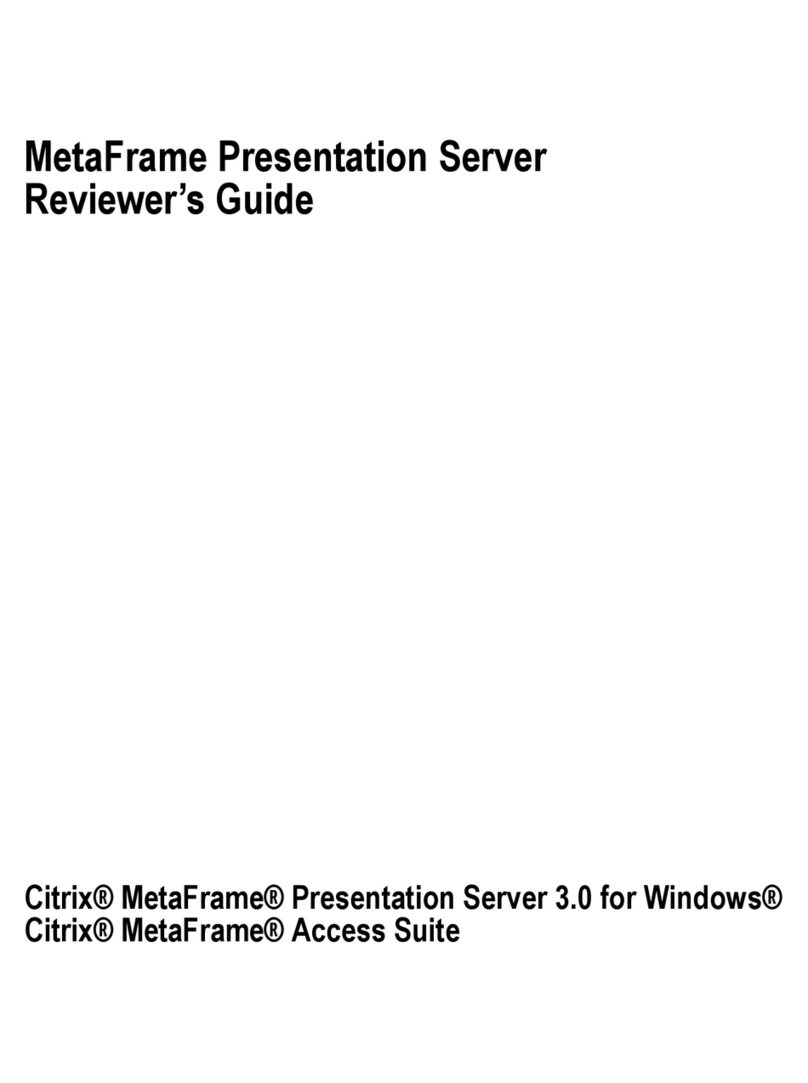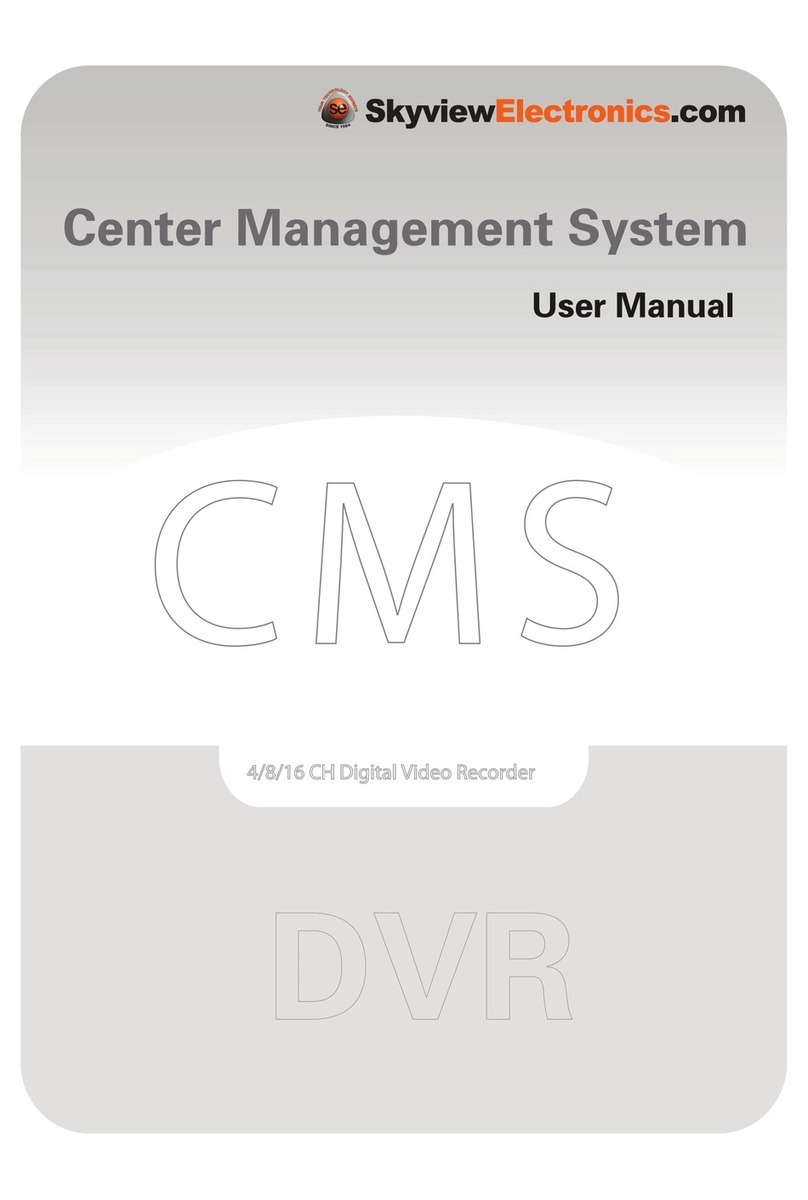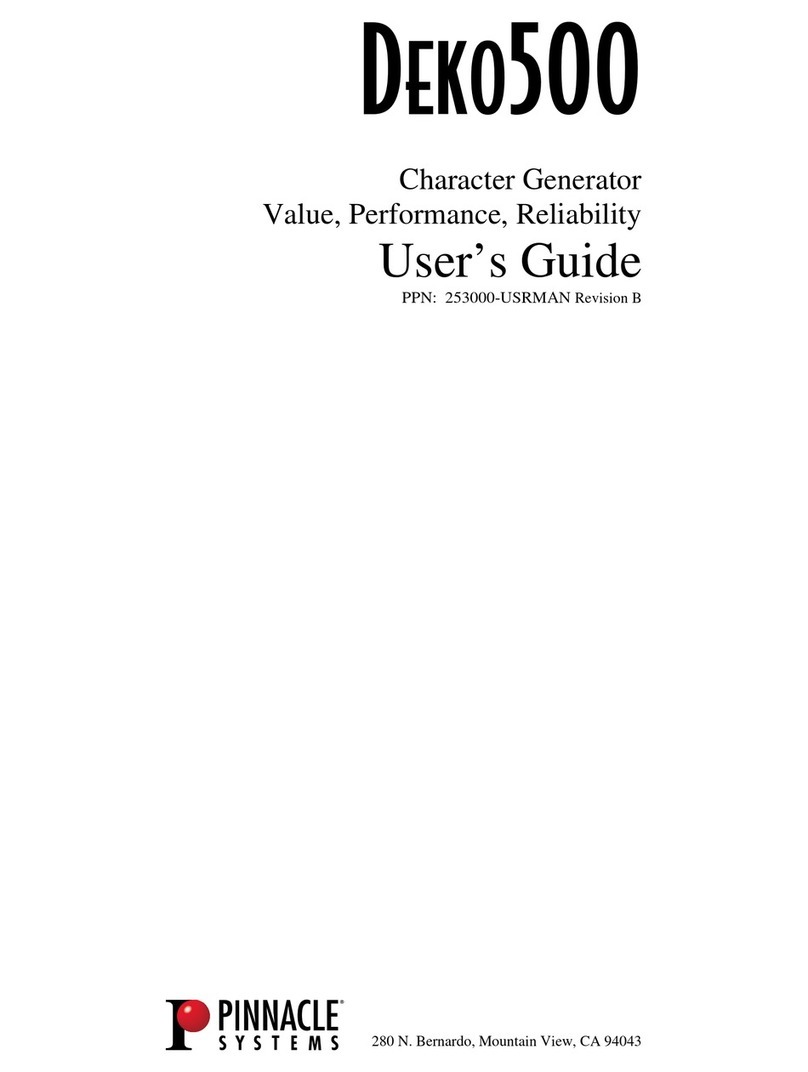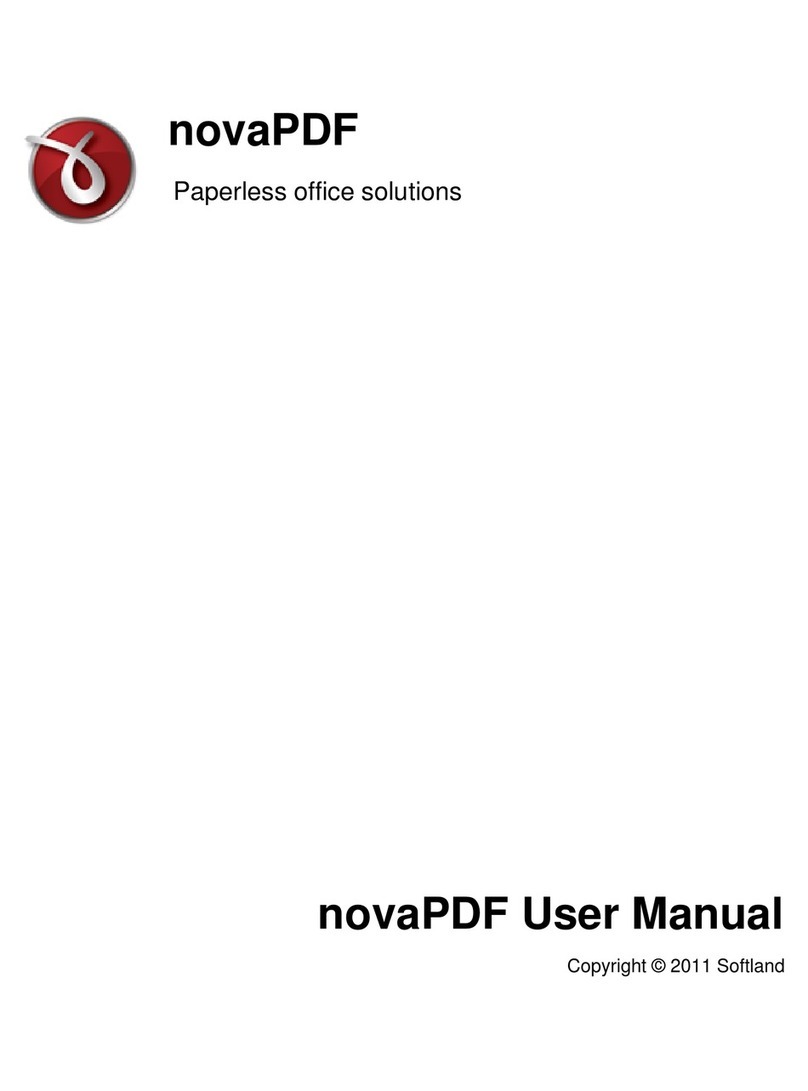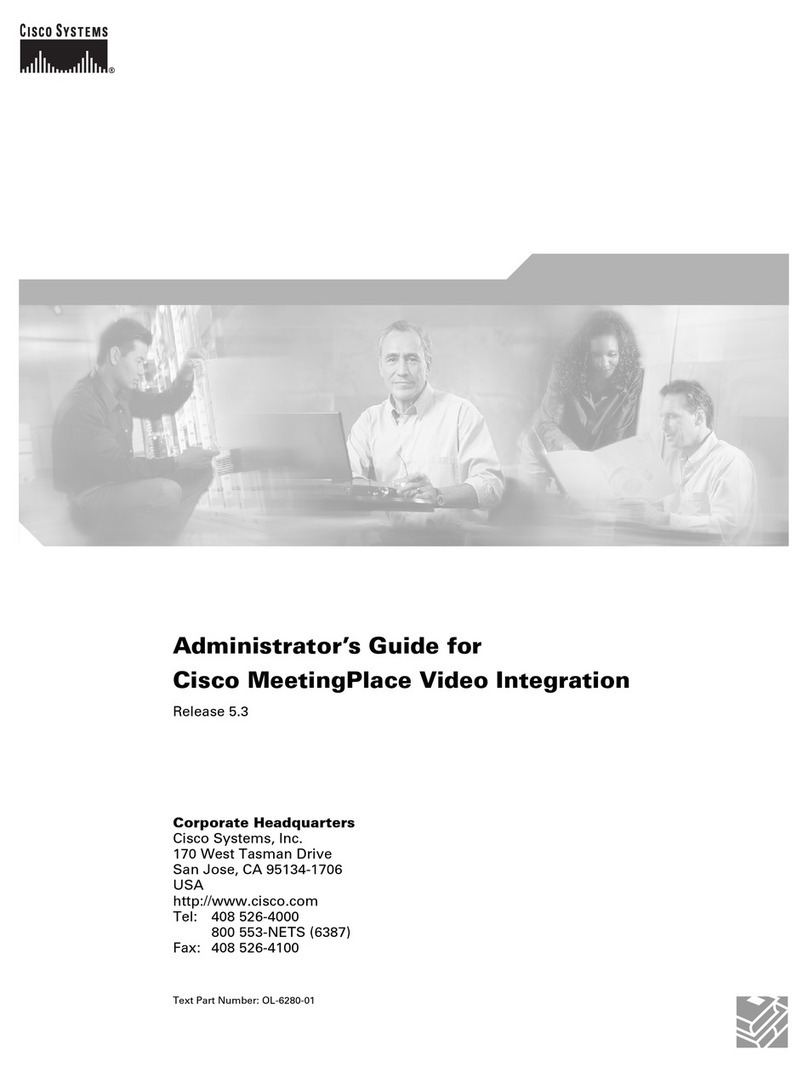Citrix EasyCall Gateway 3.0 Assembly Instructions

Citrix®EasyCall Gateway™ 3.0
Citrix EasyCall Gateway
Telephony System Integrator’s Guide
for Cisco Unified Communications Manager

Copyright and Trademark Notice
Use of the product documented in this guide is subject to your prior acceptance of the End User License Agreement. A printable
copy of the End User License Agreement is included on your product media and in the documentation download page of the
administration tool.
Information in this document is subject to change without notice. Companies, names, and data used in examples herein are
fictitious unless otherwise noted. No part of this document may be reproduced or transmitted in any form or by any means,
electronic or mechanical, for any purpose, without the express written permission of Citrix Systems, Inc.
© 2006-2009 Citrix Systems, Inc. All rights reserved.
Xen®, Citrix®, Citrix Subscription Advantage™, EasyCall™, XenServer™, XenCenter™ and logos are either registered
trademarks or trademarks of Citrix Systems, Inc. in the United States and/or other countries.
RSA Encryption © 1996-1997 RSA Security Inc., All Rights Reserved.
This product includes software developed by The Apache Software Foundation (http://www.apache.org/)
Licensing: Portions of this documentation that relate to Globetrotter, Macrovision, and FLEXlm are copyright © 2005
Macrovision Corporation. All rights reserved.
This product includes open source PostgresSQL, released under the BSD license.
Trademark Acknowledgements
Adobe, Acrobat, and PostScript are trademarks or registered trademarks of Adobe Systems Incorporated in the U.S. and/or
other countries.
Asterisk is a registered trademark of Digium, Inc.
FreePBX is a registered trademark of Atengo, LLC.
Java, Sun, and SunOS are trademarks or registered trademarks of Sun Microsystems, Inc. in the U.S. and other countries.
Solaris is a registered trademark of Sun Microsystems, Inc. Sun Microsystems, Inc has not tested or approved this product.
Portions of this software are based in part on the work of the Independent JPEG Group.
Microsoft, Windows, Windows Media, Windows Server, Windows NT, Win32, Outlook, ActiveX, Active Directory, and
DirectShow are either registered trademarks or trademarks of Microsoft Corporation in the United States and/or other countries.
trixbox (www.trixbox.com) is a registered trademark of Fonality, Inc.
UNIX is a registered trademark of The Open Group.
All other trademarks and registered trademarks are the property of their respective owners.
Document Code: August 21, 2009 (KP)

C
ONTENTS
Contents
Chapter 1 Integration Overview
Call Detail Records . . . . . . . . . . . . . . . . . . . . . . . . . . . . . . . . . . . . . . . . . . . . . . . . . . . 2
Chapter 2 Integrating with Cisco Unified Communications Manager 4.1(3)
Configuring the SIP Trunk. . . . . . . . . . . . . . . . . . . . . . . . . . . . . . . . . . . . . . . . . . . . . . 3
Configuring Call Forwarding . . . . . . . . . . . . . . . . . . . . . . . . . . . . . . . . . . . . . . . . . . . . 6
Configuring the Route Pattern . . . . . . . . . . . . . . . . . . . . . . . . . . . . . . . . . . . . . . . . 6
Configuring the Directory Number . . . . . . . . . . . . . . . . . . . . . . . . . . . . . . . . . . . . . 8
Verifying the Integration . . . . . . . . . . . . . . . . . . . . . . . . . . . . . . . . . . . . . . . . . . . . . . 10
Chapter 3 Integrating with Cisco Unified Communications Manager 4.2(3)
Configuring the SIP Trunk. . . . . . . . . . . . . . . . . . . . . . . . . . . . . . . . . . . . . . . . . . . . . 11
Configuring Call Forwarding . . . . . . . . . . . . . . . . . . . . . . . . . . . . . . . . . . . . . . . . . . . 14
Configuring the Route Pattern . . . . . . . . . . . . . . . . . . . . . . . . . . . . . . . . . . . . . . . 14
Configuring the Directory Number . . . . . . . . . . . . . . . . . . . . . . . . . . . . . . . . . . . . 16
Verifying the Integration . . . . . . . . . . . . . . . . . . . . . . . . . . . . . . . . . . . . . . . . . . . . . . 18
Chapter 4 Integrating with Cisco Unified Communications Manager 5.1
Configuring the SIP Trunk Security Profile . . . . . . . . . . . . . . . . . . . . . . . . . . . . . . . . 19
Configuring the SIP Trunk. . . . . . . . . . . . . . . . . . . . . . . . . . . . . . . . . . . . . . . . . . . . . 20
Configuring the SIP Profile . . . . . . . . . . . . . . . . . . . . . . . . . . . . . . . . . . . . . . . . . . . . 22
Configuring Call Forwarding . . . . . . . . . . . . . . . . . . . . . . . . . . . . . . . . . . . . . . . . . . . 24
Configuring the Route Pattern . . . . . . . . . . . . . . . . . . . . . . . . . . . . . . . . . . . . . . . 24
Configuring the Directory Number . . . . . . . . . . . . . . . . . . . . . . . . . . . . . . . . . . . . 24
Verifying the Integration . . . . . . . . . . . . . . . . . . . . . . . . . . . . . . . . . . . . . . . . . . . . . . 26
Chapter 5 Integrating with Cisco Unified Communications Manager 6.0/7.x
Configuring the SIP Trunk Security Profile . . . . . . . . . . . . . . . . . . . . . . . . . . . . . . . . 27
Configuring the SIP Trunk. . . . . . . . . . . . . . . . . . . . . . . . . . . . . . . . . . . . . . . . . . . . . 28
Configuring the SIP Profile . . . . . . . . . . . . . . . . . . . . . . . . . . . . . . . . . . . . . . . . . . . . 31
Configuring Call Forwarding . . . . . . . . . . . . . . . . . . . . . . . . . . . . . . . . . . . . . . . . . . . 33
Configuring the Route Pattern . . . . . . . . . . . . . . . . . . . . . . . . . . . . . . . . . . . . . . . 33
Configuring the Directory Number . . . . . . . . . . . . . . . . . . . . . . . . . . . . . . . . . . . . 34
Verifying the Integration . . . . . . . . . . . . . . . . . . . . . . . . . . . . . . . . . . . . . . . . . . . . . . 37

iv Telephony System Integrator’s Guide
Chapter 6 Integrating with Cisco Unified Communications Manager Express 3.2/4.0
Configuring the SIP Trunk. . . . . . . . . . . . . . . . . . . . . . . . . . . . . . . . . . . . . . . . . . . . . 39
Verifying the Integration . . . . . . . . . . . . . . . . . . . . . . . . . . . . . . . . . . . . . . . . . . . . . . 40

C
HAPTER
1
Integration Overview
The EasyCall Gateway has been tested for interoperability with Cisco Unified
Communications Manager, versions 4.1, 4.2, 5.1, and 6.0. It has also been tested for
interoperability with Cisco Unified Communication Manger Express, versions 3.2 and
4.0.
To enable the EasyCall Gateway to work with those Cisco systems, you must
configure a SIP trunk between the EasyCall Gateway and the Cisco system.
EasyCall Gateway integrated with Cisco Unified Communications Manager
The integration described in this guide can be done in tandem with EasyCall Gateway
installation and configuration, which includes defining the properties of the telephony
system trunk and defining any changes the EasyCall Gateway makes to telephone
numbers before sending them to the telephony system for dialing. The EasyCall
Gateway always listens on port 5060. By default, the EasyCall Gateway
communicates with the SIP trunk over port 5060; that port is configurable. For
information about EasyCall Gateway configuration, refer to the EasyCall Gateway
Administrator’s Guide.
Those responsible for configuring the telephone system must take the specific
characteristics of a site into consideration to determine the settings that are
appropriate for the site.

2 EasyCall Gateway Telephony System Integrator’s Guide
The following topics describe how to configure SIP trunks for the supported Cisco
systems.
“Integrating with Cisco Unified Communications Manager 4.1(3)” on page 3
“Integrating with Cisco Unified Communications Manager 4.2(3)” on page 11
“Integrating with Cisco Unified Communications Manager 5.1” on page 19
“Integrating with Cisco Unified Communications Manager 6.0/7.x” on page 27
“Integrating with Cisco Unified Communications Manager Express 3.2/4.0” on page 39
Call Detail Records
A Call Detail Record (CDR) is a file that contains information about calls placed
through the EasyCall Gateway. Information provided in the CDRs can be used for
billing calls to cost centers and for auditing potential abuse.

C
HAPTER
2
Integrating with Cisco Unified
Communications Manager 4.1(3)
This chapter describes a sample configuration of Cisco Unified Communications
Manager 4.1(3) for integration with the EasyCall Gateway through a SIP trunk. The
examples show the Cisco Unified Communications Manager (previously referred to as
CallManager) administration software screens.
The following topics describe the integration:
“Configuring the SIP Trunk” on page 3
“Configuring Call Forwarding” on page 6
“Verifying the Integration” on page 10
Configuring the SIP Trunk
The following screens show a sample Trunk Configuration. The default values required
for the trunk to be active are included. The table following the screens describes the
values that are important for EasyCall Gateway integration.

4 EasyCall Gateway Telephony System Integrator’s Guide
Trunk Configuration page: version 4.1(3)

Chapter 2 Integrating with Cisco Unified Communications Manager 4.1(3) 5
Trunk Configuration page (continued): version 4.1(3)
Note The PBX administrator must provide the following call routing information for
Inbound Calls section of the SIP trunk configuration:
• Calling Search Space
• AAR Calling Search Space
If either of these values is not required, select None.
Setting Description
Destination Address The IP address of the EasyCall Gateway.
Destination Port The port of the proxy server. Defaults to 5060 and should not be changed.
Incoming Port The listening port of the Unified Communication Manager. Defaults to 5062.
Outgoing Transport Type Must be UDP.
Preferred Originating
Codec Must be 711ulaw.

6 EasyCall Gateway Telephony System Integrator’s Guide
Configuring Call Forwarding
The Call Forwarding feature requires that you create a route pattern for phone
numbers to be routable to the EasyCall Gateway, as described in “Configuring the
Route Pattern” on page 6.
You must also configure each user’s Directory Number Configuration to forward users’
“No Answer” calls to a number that matches the configured route pattern, as described
in “Configuring the Directory Number” on page 8.
Configuring the Route Pattern
The following screens show a sample Route Pattern Configuration.
Route Pattern Configurationpage: version 4.1(3)
Setting Description
Route Pattern The phone number that is to be routed to the EasyCall Gateway.
Gateway or Route List The SIP trunk that points to the EasyCall Gateway.

Chapter 2 Integrating with Cisco Unified Communications Manager 4.1(3) 7
Route Pattern Configuration page (continued): version 4.1(3)

8 EasyCall Gateway Telephony System Integrator’s Guide
Configuring the Directory Number
The following screens show a sample Directory Number Configuration.
Directory Number Configuration page: version 4.1(3)
Directory Number Configuration page (continued): version 4.1(3)

Chapter 2 Integrating with Cisco Unified Communications Manager 4.1(3) 9
Directory Number Configuration page (continued): version 4.1(3)
Directory Number Configuration page (continued): version 4.1(3)
Setting Description
Directory Number The user’s extension.
Forward No Answer
Internal / Forward No
Answer External
A number that matches the route pattern of numbers to be forwarded to the
EasyCall Gateway. This is the number to which calls are forwarded if the user
does not answer the extension.

10 EasyCall Gateway Telephony System Integrator’s Guide
Verifying the Integration
• Install EasyCall on one or more user PCs and place different types of calls
(domestic, international).
• Use the EasyCall client interface to configure one or more locations and to add
those locations to Call Forwarding. Have someone call your office extension;
verify that the call is forwarded to the location(s) you specified.

C
HAPTER
3
Integrating with Cisco Unified
Communications Manager 4.2(3)
This chapter describes a sample configuration of Cisco Unified Communications
Manager 4.2(3) for integration with the EasyCall Gateway through a SIP trunk. The
examples show the Cisco Unified Communications Manager (previously referred to as
CallManager) administration software screens.
The following topics describe the integration:
“Configuring the SIP Trunk” on page 11
“Configuring Call Forwarding” on page 14
“Verifying the Integration” on page 18
Configuring the SIP Trunk
The following screens show a sample Trunk Configuration. The default values required
for the trunk to be active are included. The table following the screens describes the
values that are important for EasyCall Gateway integration.

12 EasyCall Gateway Telephony System Integrator’s Guide
Trunk Configuration page: version 4.2(3)

Chapter 3 Integrating with Cisco Unified Communications Manager 4.2(3) 13
Trunk Configuration page (continued): version 4.2(3)
Note The PBX administrator must provide the following call routing information for
Inbound Calls section of the SIP trunk configuration:
• Calling Search Space
• AAR Calling Search Space
If either of these values is not required, select None.
Setting Description
Destination Address The IP address of the EasyCall Gateway.
Destination Port The port of the proxy server. Defaults to 5060 and should not be changed.
Incoming Port The listening port of the Unified Communication Manager. Defaults to 5062.
Outgoing Transport Type Must be UDP.
Preferred Originating
Codec Must be 711ulaw.

14 EasyCall Gateway Telephony System Integrator’s Guide
Configuring Call Forwarding
The Call Forwarding feature requires that you create a route pattern for phone
numbers to be routable to the EasyCall Gateway, as described in “Configuring the
Route Pattern” on page 14.
You must also configure each user’s Directory Number Configuration to forward users’
“No Answer” calls to a number that matches the configured route pattern, as described
in “Configuring the Directory Number” on page 16.
Configuring the Route Pattern
The following screens show a sample Route Pattern Configuration.
Route Pattern Configurationpage: version 4.2(3)
Setting Description
Route Pattern The phone number that is to be routed to the EasyCall Gateway.
Gateway or Route List The SIP trunk that points to the EasyCall Gateway.

Chapter 3 Integrating with Cisco Unified Communications Manager 4.2(3) 15
Route Pattern Configuration page (continued): version 4.2(3)

16 EasyCall Gateway Telephony System Integrator’s Guide
Configuring the Directory Number
The following screens show a sample Directory Number Configuration.
Directory Number Configuration page: version 4.2(3)
Directory Number Configuration page (continued): version 4.2(3)
Table of contents
Other Citrix Software manuals
Popular Software manuals by other brands
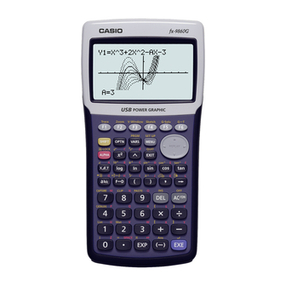
Casio
Casio fx-9860G AU PLUS user guide
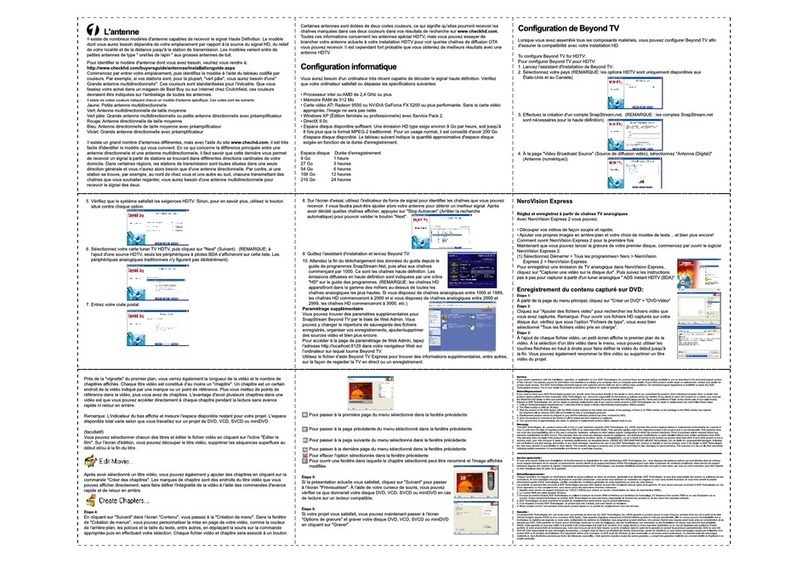
ADS Technologies
ADS Technologies INSTANTHDTV PCI PTV380 - SOFTWARE GUIDE 2 Software guide
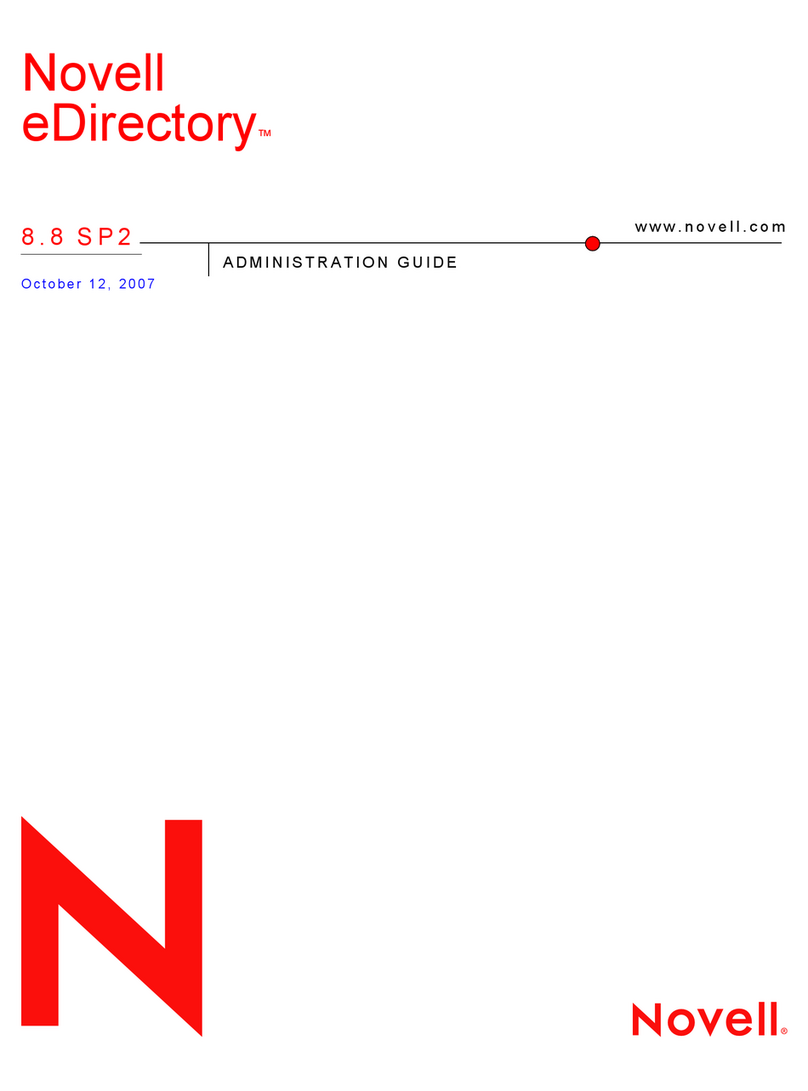
Novell
Novell EDIRECTORY 8.8 SP2 manual
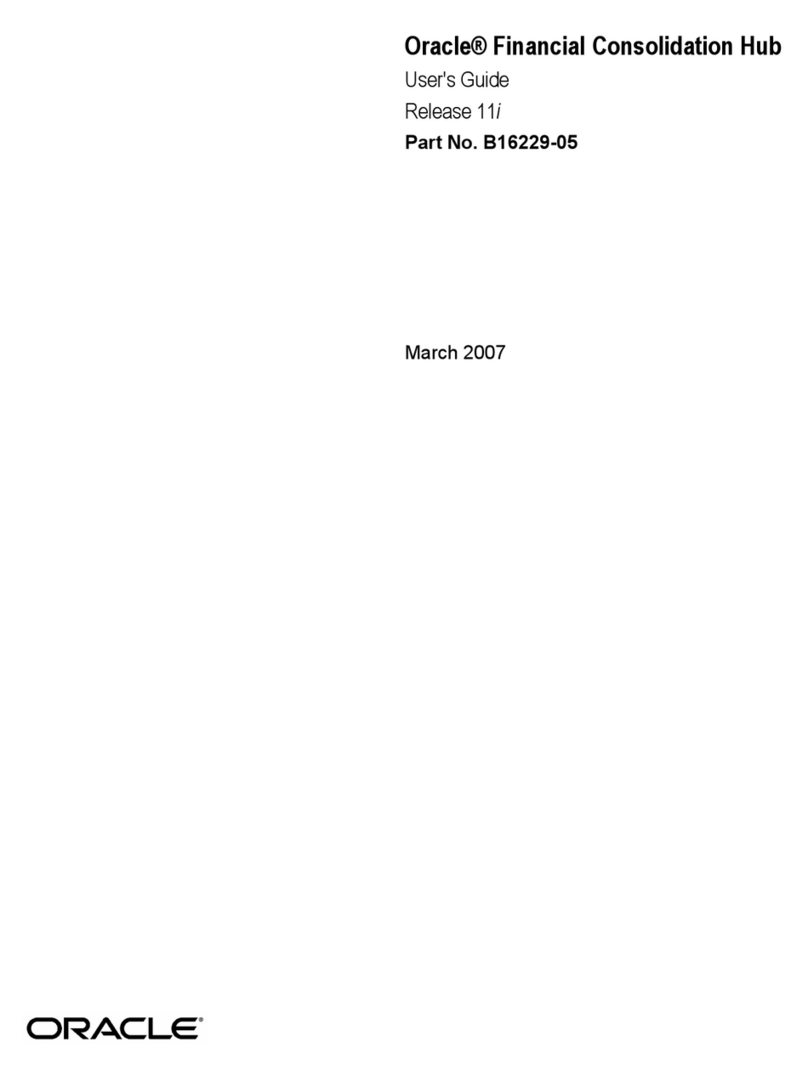
Oracle
Oracle Oracle Financial Consolidation Hub user guide
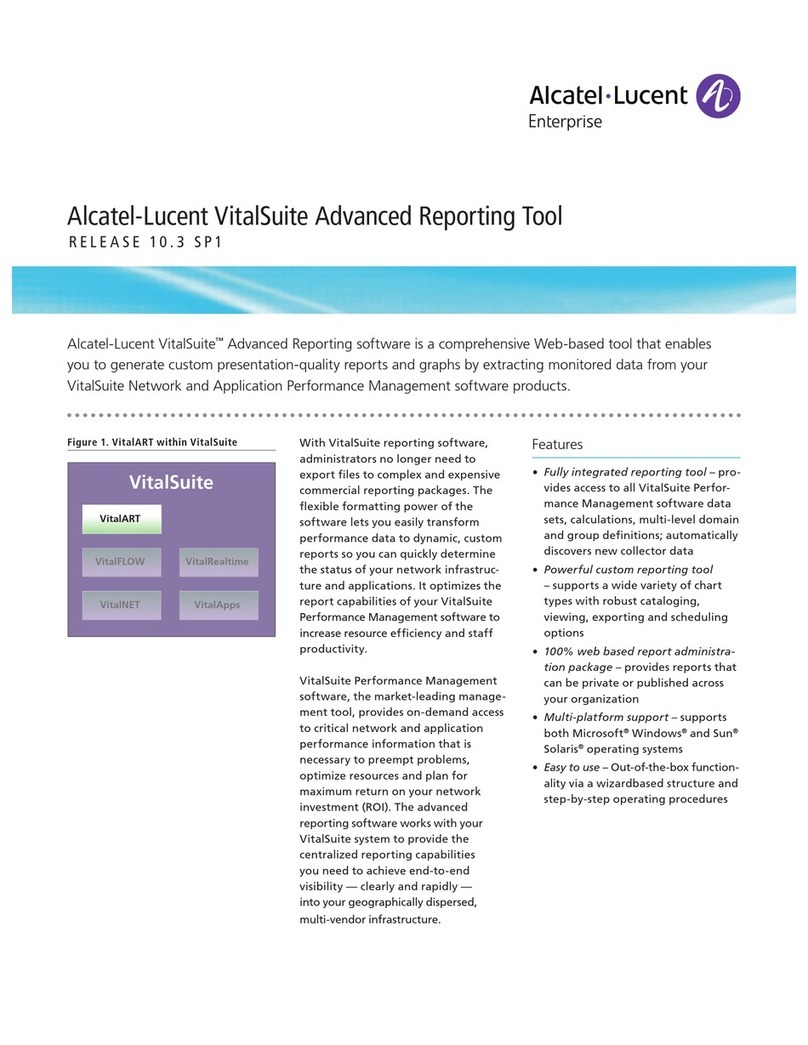
Alcatel
Alcatel VitalSuite RELEASE 10.3 SP1 datasheet
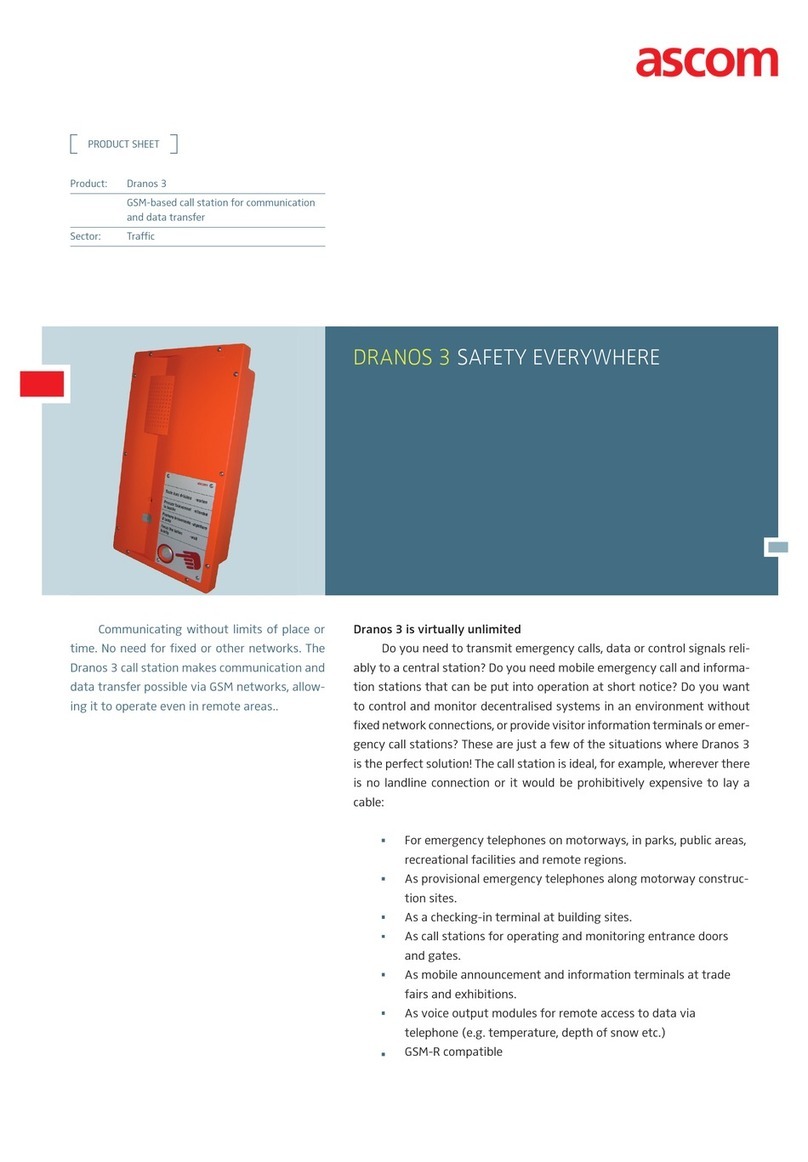
ASCOM
ASCOM DRANOS 3 datasheet
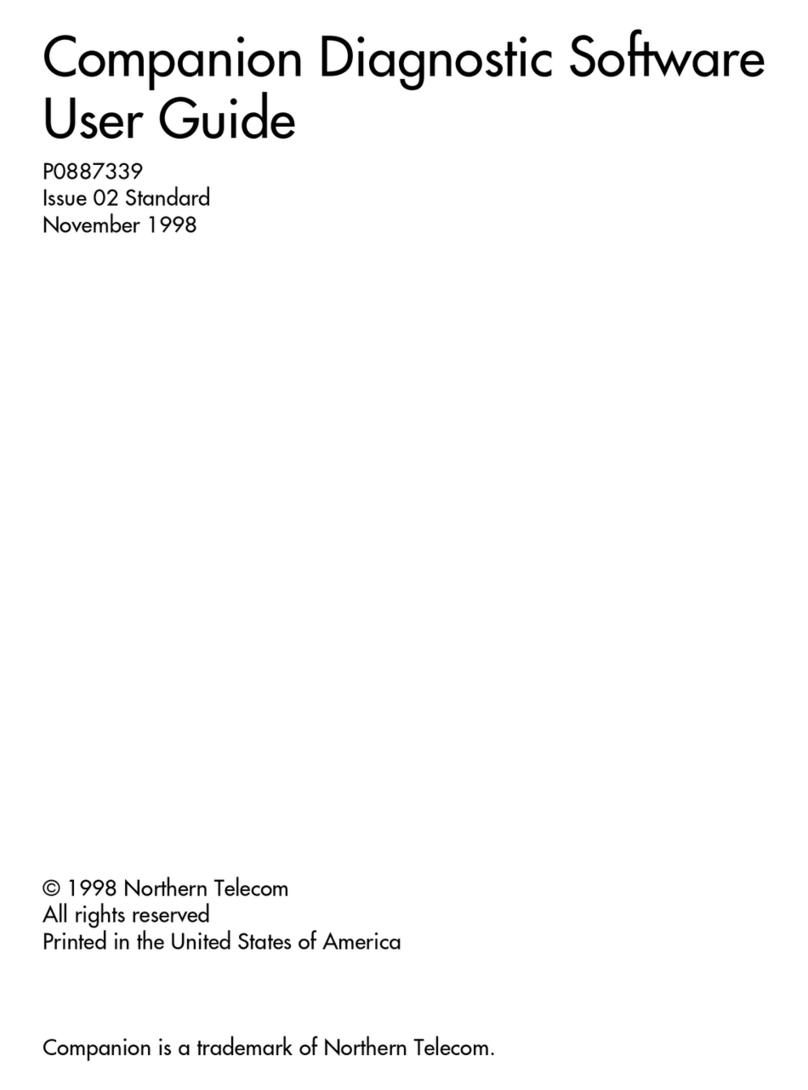
Northern Telecom
Northern Telecom Meridian Companion user guide
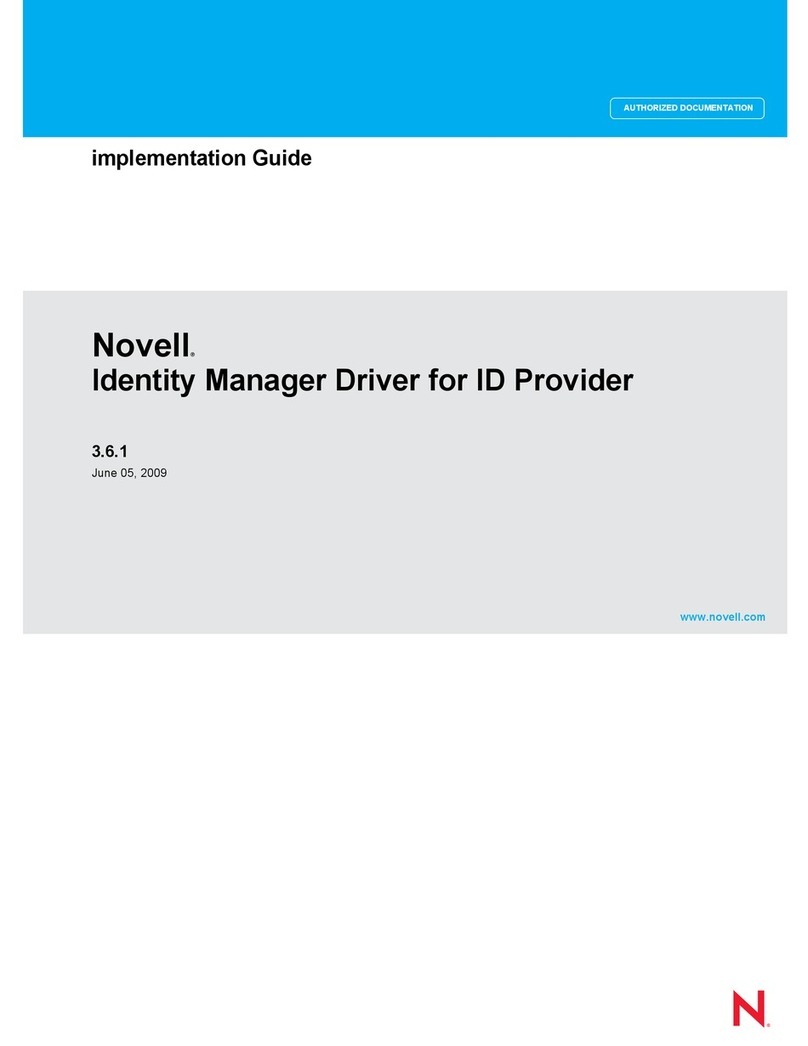
Novell
Novell IDENTITY MANAGER DRIVER FOR ID PROVIDER 3.6.1 -... manual

Blackbe;rry
Blackbe;rry Messenger user guide
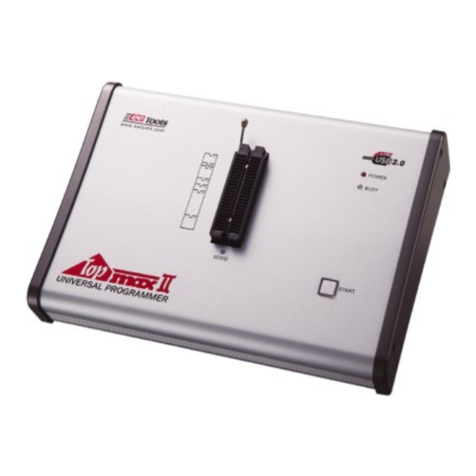
EE Tools
EE Tools MaxLoader user guide

Golden Island
Golden Island Cosmo Service manual
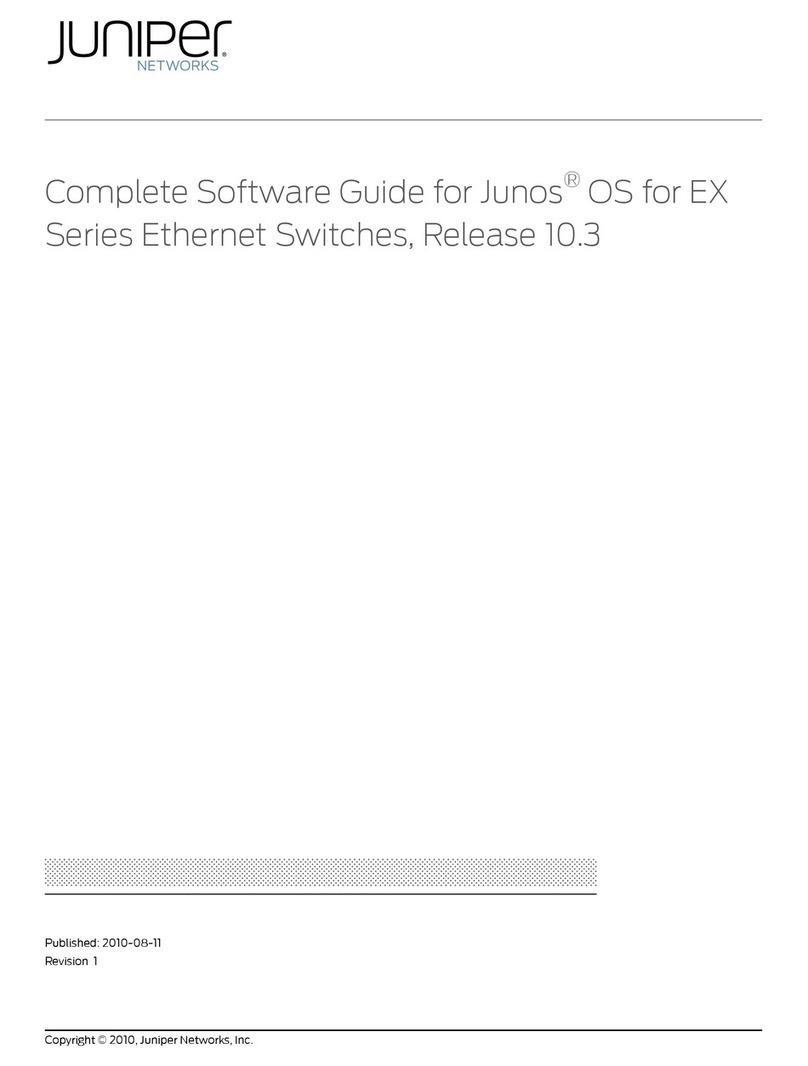
Juniper
Juniper JUNOS OS 10.3 - SOFTWARE manual
